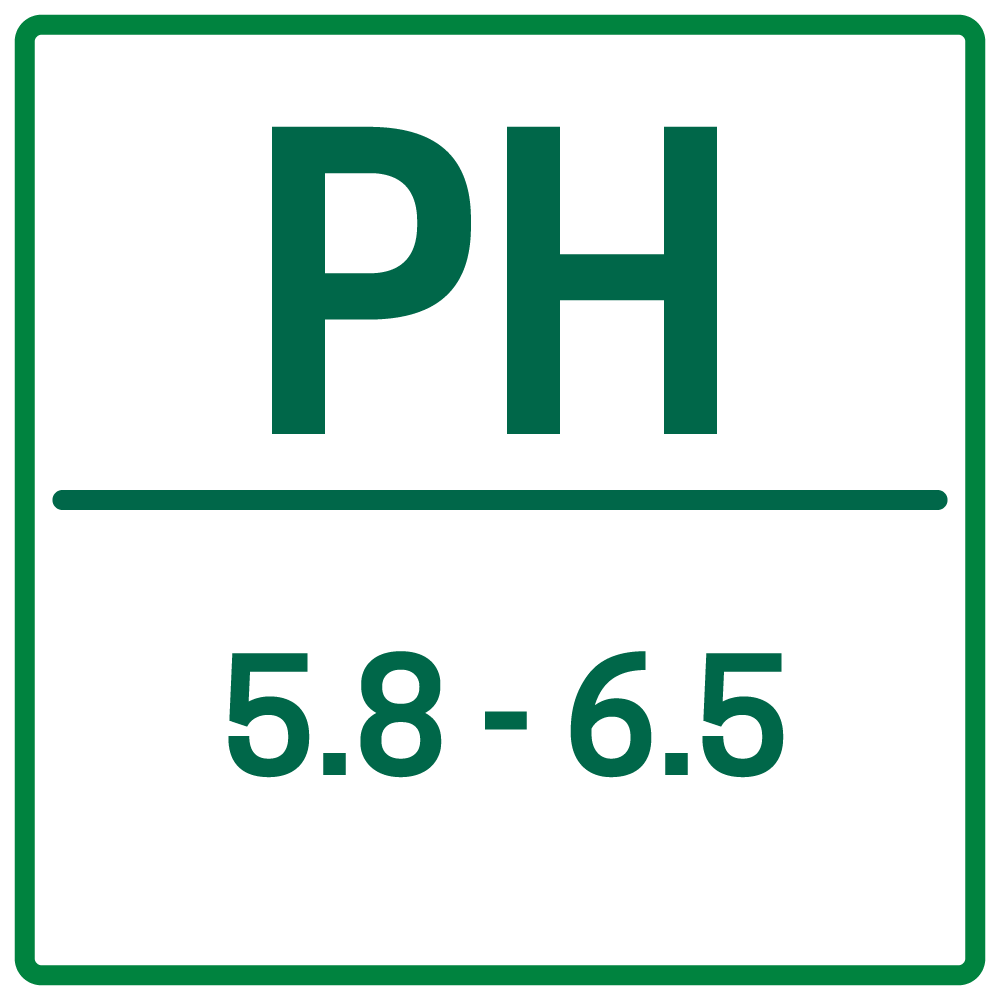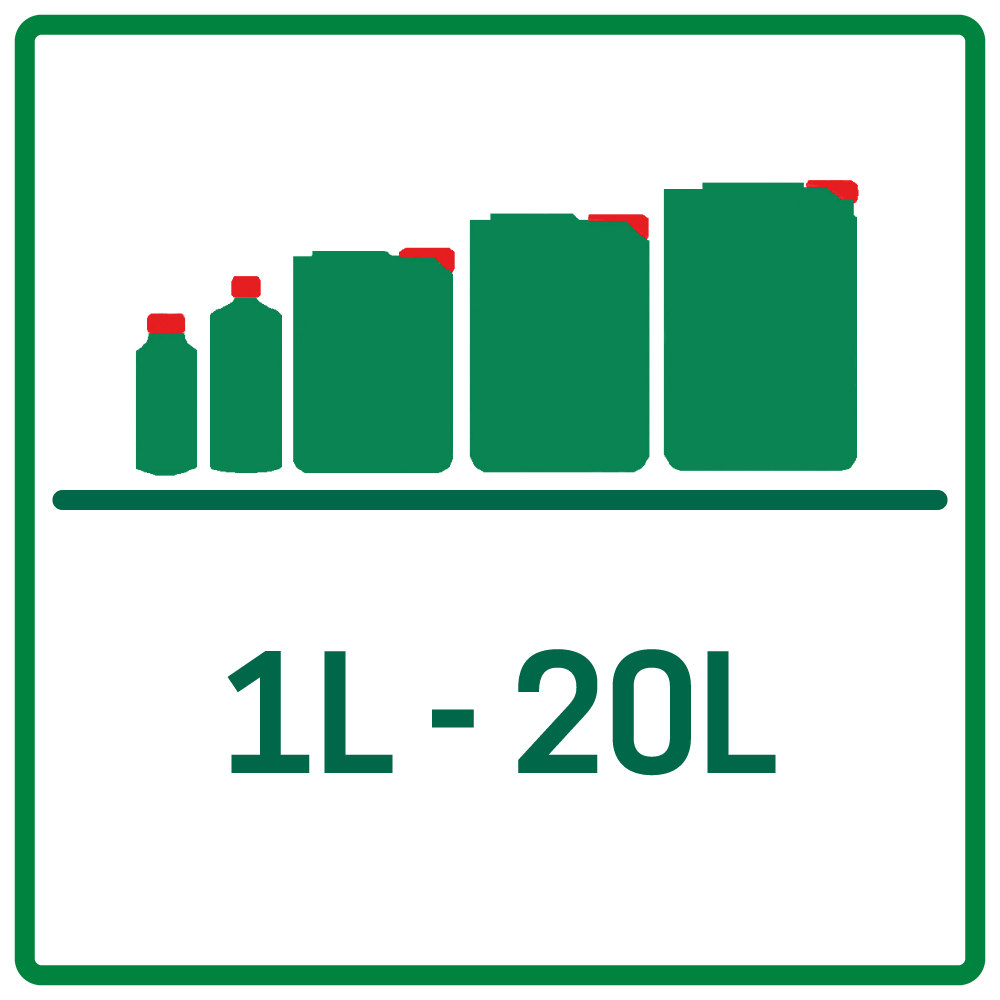Ph – Grow

Dosage

NPK

Sizes

Usage Phase
Yes. In Holland, we say: “measuring is knowing”. It is really important to measure the pH and EC, before feeding your plants. Optimal circumstances are when the pH and EC are between 5.8 and 6.5. When the pH is below 5.8 or above 6.5 your plants can become seriously damaged and lose their capability to grow strong and healthy.
It is just as important to measure the EC. When the EC is too low, shortages in nutrition can arise, which damages your plant. When the EC is too high it can lead to poisoning and burning. Both are just as harmful, so always follow the schedule as a guideline.
First of all, measuring for your pH and EC is essential to optimal plant growth. Let’s explain why:
EC, or electro conductivity, will tell you how concentrated the nutrients are in your water or substrate. Which could determine if your plants will suffer deficiencies or suffer from nutrient burn due to too high of a concentrate of nutrients.
pH is a measure of acidity or alkalinity. It can tell you if your plants will be able to absorb the nutrients from the substrate. If the pH is not within a specific range it can cause mineral deposits, root rot, and deficiencies among other things within your plant. The optimal pH range for proper nutrient absorption for water is 5.8-6.5.
The easiest way to explain the difference is by using a cup of tea.
Assume you have a cup of tea with sugar.
Sugar = EC in our example
The temperature of the water = pH
EC will tell you the amount of nutrients there are in your water or in our example, it will tell us how much sugar we have in our cup of tea. The more sugar we pour in, the higher the EC will be, making our tea very sweet.
pH will tell you if your plants will be able to uptake the nutrients from the soil or in our example the temperature of the water will tell us if we can drink the tea without burning our mouth. We check the temperature regularly to save ourselves from a burn or waiting too long and our tea getting cold. Plants can not check their pH like we can check our tea temperature, but that does not mean that they are not sensitive to it. In fact, plants are very sensitive and can only uptake nutrients (comparable to us drinking tea) if the pH is in between a range of 5.8 – 6.5. So, we must make sure to regularly check our plants’ pH to prevent nutrient burns or other issues.
By measuring the pH, growers learn exactly what their plants need. So, if you want to achieve the best results, you need to measure the factors that directly impact the results.
In Soil, the pH can vary between 5.8 – 6.5 just because of the substrate.
With Hydro/Coco, you should stay on the lower end of that range, around pH 5.8, for optimal nutrient uptake.
*It is recommended to occasionally let your pH fluctuate because this ensures that certain elements are absorbed slightly better than when the pH remains constant.
Plants need different pH levels to efficiently absorb nutrients. If the pH level of the soil or growing medium is not optimal, plants may not be able to absorb certain nutrients, even if they are present in sufficient quantities. This can lead to poor growth, reduced yields, and an increased risk of diseases and pests. That is why it is important to regularly measure the pH level of the soil or growing medium and adjust it if necessary to ensure that the plants receive the right amount of nutrients.
The optimal pH level for plant growth depends on the type of plant and the growing medium.

The importance of keeping a balanced pH during your Grow phase is essential to a healthy, happy plant.
pH- Grow is designed specifically to reduce the pH level during the Grow phase. pH- Grow uses Nitric Acid as its main ingredient.
Use pH-Grow to balance your pH level. Add this product after all the other products have been added. Only use pH-Grow in the Growth phase.
Shake well before use.
Keep out of reach of children.
Store cool and tight.
Store in the original packaging.
Add pH-Grow until you’ve reached a pH level of 5.8 – 6.5.
You only need a couple of drops per liter to lower your pH to the desired levels.
NPK : 8 – 0 – 0.
Available in : 1L – 5L – 10L – 20L.
Be aware : Some values might not be available depending on each country.
Low in usage.
Works great in reducing the pH levels.
Specially designed for the growth phase.
You use pH- grow to reduce the pH level during the grow phase.
pH is critical to having a great crop. By measuring your pH, growers get to know exactly what their plants need.
Yes. In Holland, we say: “measuring is knowing”. It is really important to measure the pH and EC, before feeding your plants. Optimal circumstances are when the pH and EC are between 5.8 and 6.5. When the pH is below 5.8 or above 6.5 your plants can become seriously damaged and lose their capability to grow strong and healthy.
It is just as important to measure the EC. When the EC is too low, shortages in nutrition can arise, which damages your plant. When the EC is too high it can lead to poisoning and burning. Both are just as harmful, so always follow the schedule as a guideline.
First of all, measuring for your pH and EC is essential to optimal plant growth. Let’s explain why:
EC, or electro conductivity, will tell you how concentrated the nutrients are in your water or substrate. Which could determine if your plants will suffer deficiencies or suffer from nutrient burn due to too high of a concentrate of nutrients.
pH is a measure of acidity or alkalinity. It can tell you if your plants will be able to absorb the nutrients from the substrate. If the pH is not within a specific range it can cause mineral deposits, root rot, and deficiencies among other things within your plant. The optimal pH range for proper nutrient absorption for water is 5.8-6.5.
The easiest way to explain the difference is by using a cup of tea.
Assume you have a cup of tea with sugar.
Sugar = EC in our example
The temperature of the water = pH
EC will tell you the amount of nutrients there are in your water or in our example, it will tell us how much sugar we have in our cup of tea. The more sugar we pour in, the higher the EC will be, making our tea very sweet.
pH will tell you if your plants will be able to uptake the nutrients from the soil or in our example the temperature of the water will tell us if we can drink the tea without burning our mouth. We check the temperature regularly to save ourselves from a burn or waiting too long and our tea getting cold. Plants can not check their pH like we can check our tea temperature, but that does not mean that they are not sensitive to it. In fact, plants are very sensitive and can only uptake nutrients (comparable to us drinking tea) if the pH is in between a range of 5.8 – 6.5. So, we must make sure to regularly check our plants’ pH to prevent nutrient burns or other issues.
By measuring the pH, growers learn exactly what their plants need. So, if you want to achieve the best results, you need to measure the factors that directly impact the results.
In Soil, the pH can vary between 5.8 – 6.5 just because of the substrate.
With Hydro/Coco, you should stay on the lower end of that range, around pH 5.8, for optimal nutrient uptake.
*It is recommended to occasionally let your pH fluctuate because this ensures that certain elements are absorbed slightly better than when the pH remains constant.
Plants need different pH levels to efficiently absorb nutrients. If the pH level of the soil or growing medium is not optimal, plants may not be able to absorb certain nutrients, even if they are present in sufficient quantities. This can lead to poor growth, reduced yields, and an increased risk of diseases and pests. That is why it is important to regularly measure the pH level of the soil or growing medium and adjust it if necessary to ensure that the plants receive the right amount of nutrients.
The optimal pH level for plant growth depends on the type of plant and the growing medium.